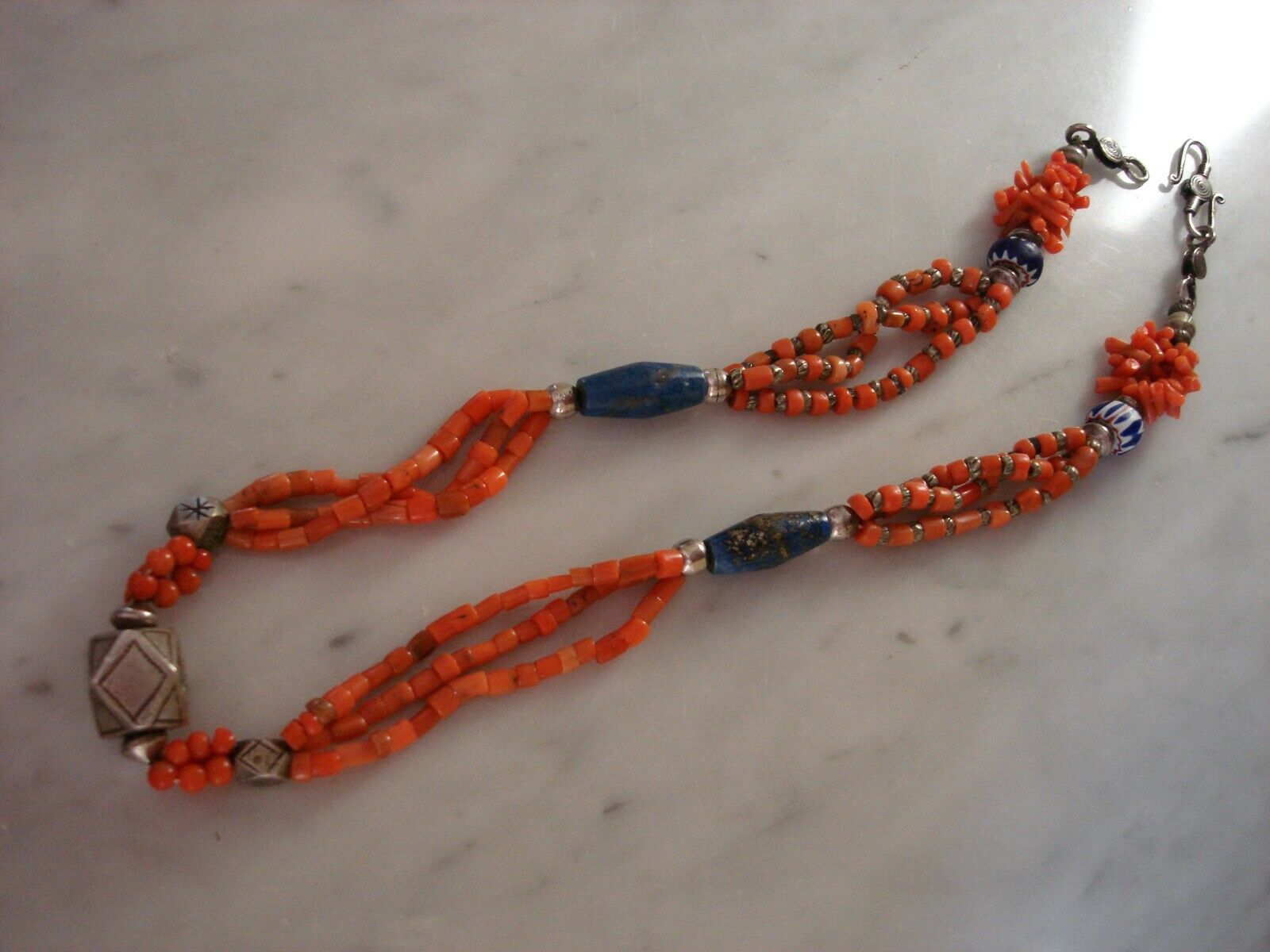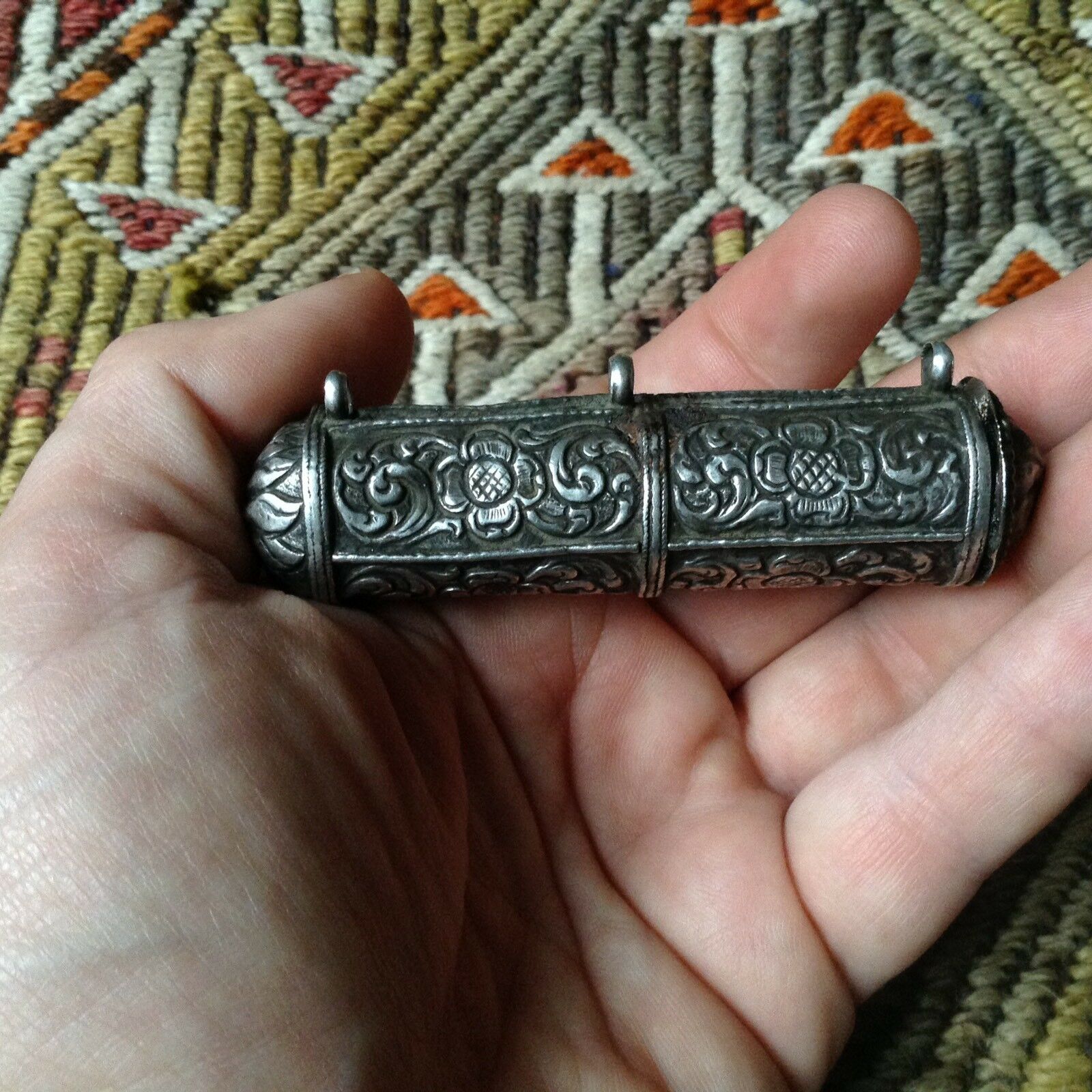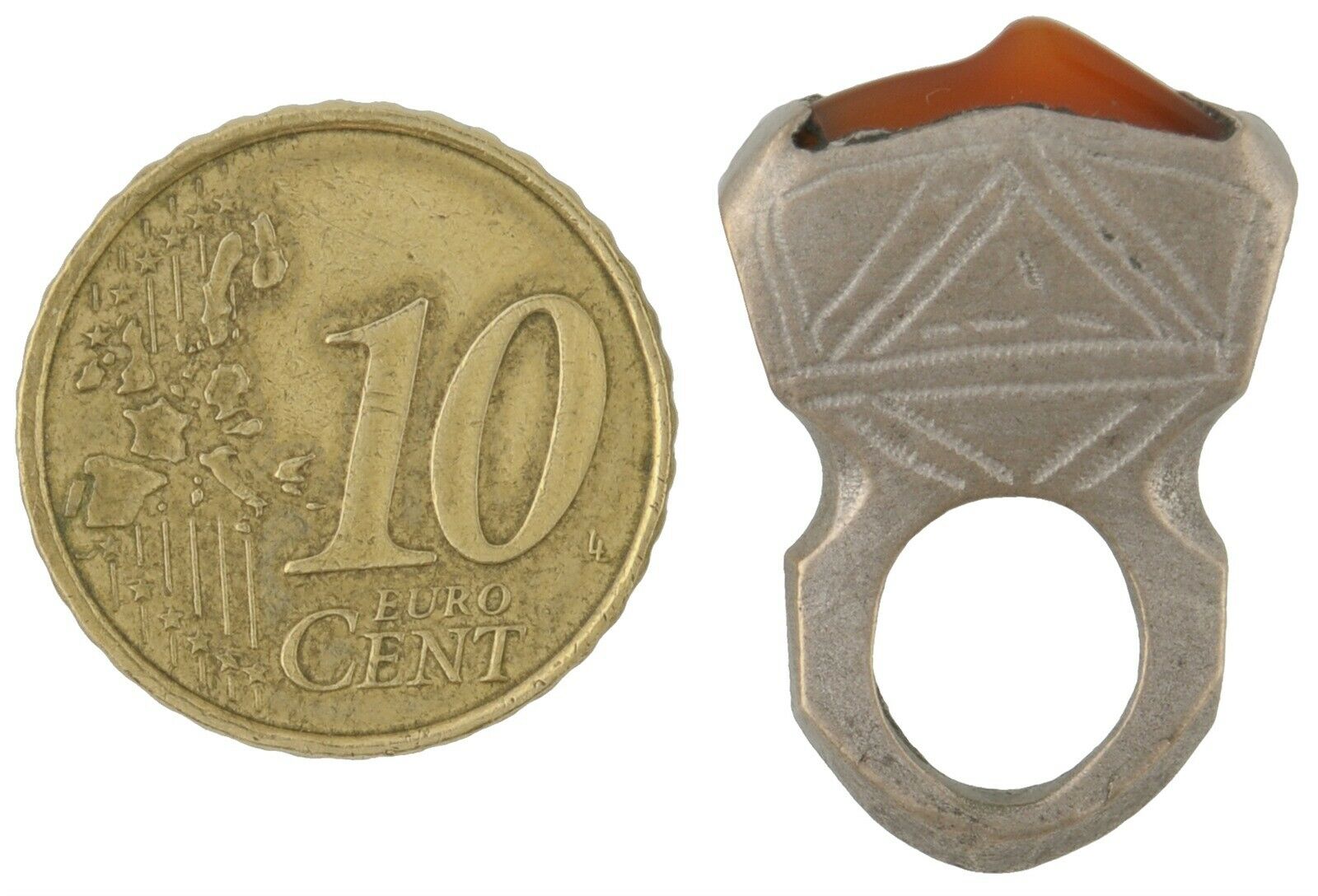-40%
Moroccan Fibula enameled Berber Tuareg necklace with chrysoprase and Carnelian.
$ 109.29
- Description
- Size Guide
Description
Moroccan Fibulae enameled Tuareg Berber handmade necklace with faceted chrysoprase and Carnelian necklace.Beautiful handmade unique intricate enameled blue, green and yellow fibulae fibula silver Moroccan pendant necklace with faceted oblong chrysoprase beads and polished carnelian beads.
This statement necklace art piece measurements are:
Total length 25.5” plus the pendant length of 6”.
The silver fibula pendant measures 3” in length by 1.5” in width.
The silver charm measures 2” and the faceted chrysoprase bead charm measures approximately .6”.
There is a Tibetan silver hook clasp closure.
The chrysoprase faceted oval beads are approximately 8mm by 12mm.
The carnelian polished nuggets are approximately 10mm to 12mm.
There are silver spacer beads through out this necklace.
A Morrocan Fibula is an item of jewelry that was commonly worn by Morrocan women as an everyday adornment while going about daily work as well as on special occasions. It is essentially a cloak fastener, comprising an ornate metal triangular, round or oval shape with detailed etchings in filigree or enamel, and a pin which serves to fasten two layers of material together. They were usually worn as a pair. Tribal women often wore (and sometimes still do) a simple piece of material or two pieces of material draped across their bodies and tied with a belt. The fibula negated the need to cut the material or to sew it; the clothing could simply be fastened by the use of the pin or pins to attach the material together. At the same time, the fibula served as a decorative item. If it was made in an inverted triangular shape, this represented the female form and fertility. Often attached to the fibula by means of a chain was a Tagmoute and also a number of silver coins. The weight, size, detail and workmanship of the fibula worn indicated the social standing of the wearer. Each region or tribe in Morocco had its own distinctive style of fibula, but each pair was unique.
Chrysoprase is a green colored gemstone variety of chalcedony. While emeralds get their green color from the presence of chromium, the bright, spring green color of chrysoprase is a result of the presence of nickel. The amount of nickel present causes a beautiful variety of colors, ranging from a pale yellow to a light to dark green. Pieces of this stone are often very beautiful as the nickel inclusions create lovely patterns in the stone. Chrysoprase is the most valuable gemstone in the chalcedony family and used to be mistaken for emeralds by ancient jewelers. These days, the green apple colored variety of chrysoprase is the color most commonly found. Chrysoprase is cryptocrystalline, which means it is composed of crystals so fine, they are not able to be seen by the naked eye, unlike amethyst, citrine and other kinds of crystalline quartz. Agate, carnelian and onyx are other examples of the cryptocrystalline family. Chrysoprase has a hardness of 6–7 on the Moh's hardness scale. It is on the list of birthstones by month as both a May and June birthstone.
If the Chrysoprase crystal has found its way into your life, take it as a sign that you're in need of an emotional makeover. Known for manifesting optimism, joy, and happiness, the Chrysoprase crystal stone is one of the best antidepressants in the world of crystal healing. If you have a checklist of garden-variety emotional ailments like depression, anxiety, and stress, Chrysoprase crystal properties are an effective prescription for encouraging a more positive outlook on life. Keep this gemstone in your corner and remember to always look on the bright side, even during cloudy weather.
Carnelian is said to aid health, long life and good fortune. It is also said to help one fulfil ones innermost wishes if worn near the heart. Warming and cleansing the blood and kidneys this stone works well in the orange and yellow. This stone can also be used to stimulate appetite, passion, emotions and physical energy.
Like the unexpected fire of a sunset, or the first flash of autumn brilliance, Carnelian captivates. Its bold energy brings a rush of warmth and joy that lingers, stimulating and empowering. Known as a stone of motivation and endurance, leadership and courage, Carnelians have protected and inspired throughout history.
A glassy, translucent stone, Carnelian is an orange-colored variety of Chalcedony, a mineral of the Quartz family. Its color varies from pale pinkish-orange to a deep rusty brown, though it is most known for its brilliant orange and red-orange crystals. Its name comes from a Latin word meaning "flesh."
In antiquity, as well as today, Carnelian is believed to help timid speakers become both eloquent and bold. Ancient Warriors wore Carnelian around their neck for courage and physical power to conquer their enemies. In Egypt it was worn by master architects to show their rank of builder, and alchemists of the Middle Ages used it as a boiling stone to activate the energy of other Chalcedonies.
The ancient Egyptians called Carnelian "the setting sun." In its orange hues, they identified it with the receptive or passive female energies, and associated it with the fertile menstrual blood of the mother goddess, Isis. In its red, red-orange to reddish brown shades, they considered it the active male energy stone, recognized by its glowing vibrant color. Carnelian is traditionally worn to enhance passion, love, and desire.



















